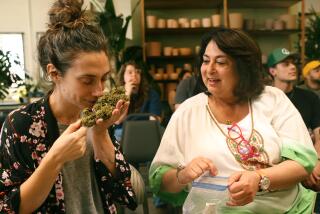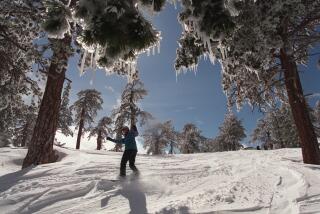Amid the burst of greenery, plenty to do
The delicate fragrance of fruit tree blossoms tells us spring is arriving, even though the occasional shower might (and hopefully will) soak the garden. It’s the time of year when gardeners can enjoy the fruits of their fall labors, but it is an equally good time to shop and plant.
Sow those seeds
You might start with something to eat. Sow seeds of plants that thrive and grow quickly during the cool of spring, such as lettuce and mesclun mixes or carrots, beets, green onions and other salad makings. Seeds sprout quickly in March. Raised beds are best for these small vegetables, providing good soil and protection from being trampled.
But hold the tomatoes
Despite the fact that nurseries have them, wait to plant tomatoes until April, or even May if you live near the coast. Planted now, they’ll grow big but they won’t fruit. The exceptions: ‘Early Girl’ or the cherry tomato named ‘Sweet 100’, considered early varieties. And don’t bother with those short, conical tomato cages. Try instead a 6-foot-tall cage of welded wire with 6-by-6-inch openings. A piece just over 78 inches long will make a cage about 2 feet in diameter, big enough for a summer’s worth of growing. Tie the cage to hefty stakes so it doesn’t topple with the weight.
Crazy for camellias?
If you plant them properly, camellias are tough, surprisingly drought resistant and quite long-lived, as the 100-year-old-plus specimens around the state Capitol in Sacramento prove. These doyens of the shady side yard can be planted while in bloom, a good idea since you can see what the flowers look like. Camellias will not thrive and might die if planted so their crowns become covered. Plant them high, so 1 full inch of the rootball sticks aboveground. Fertilize established plants with an acidic fertilizer; cottonseed meal is a favorite organic.
Hey, bud
If some camellia buds “bullnose” and never open, becoming sticky and wet looking, it may be caused by the weather or by overhead sprinkling. Petal blight is similar, but the veins in petals darken and turn to mush when rubbed together. The only practical cure for blight is cultural -- keep fallen blooms raked up and renew mulches under plants after flowering.
Perennial favorites
This may be the best time to plant traditional perennials such as agapanthus, alstroemeria, bearded iris, coral bells, coreopsis, daylily, lamb’s ears, penstemon, most salvias, Santa Barbara daisy, Swan River daisy, true geraniums and various verbenas. Some of these already may be in bloom, but planted now they will continue to grow well through spring and summer.
Snail patrol
Snails awaken as the weather warms and head for the youngest, tastiest greens they can find. Bait vulnerable plants with nontoxic iron phosphate products such as Sluggo, or traditional poison baits containing metaldehyde. Or get up really early in the morning and hunt them down, crunching them with a stick (a long closet dowel works great). Feel no pity! Remember the alstroemeria!






